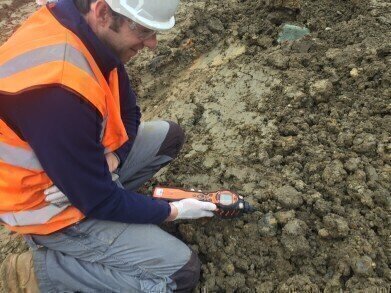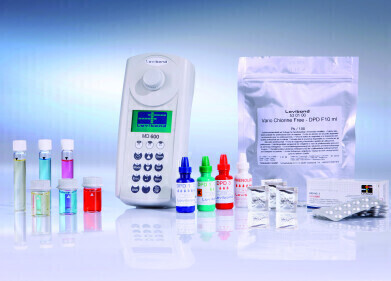Portable/Field Testing
Provectus Chooses PID for Humidity Resistant and Anti-Contamination Design
Mar 07 2017
Contaminated land remediation specialist, Provectus Remediation Ltd has replaced an old photoionisation detector (PID) with a well proven Tiger handheld volatile organic compound (VOC) monitor from Ion Science. The high performance instrument was chosen by the Essex-based company for its MiniPID sensor’s humidity resistance and anti-contamination design.
Provectus Remediation Ltd has been providing turnkey contaminated land remediation solutions to the regeneration industry for over 25 years. This has included the first use of in-situ thermal desorption in Europe, fixed price remediation and enabling works as well as insurance backed risk transfer packages and innovative funding solutions.
Supplied via Ion Science’s distributor, Shawcity, Provectus is using the Tiger PID to indicate VOC concentrations in contaminated ground during investigations, trials and treatment. The instrument is occasionally used to check occupational exposure on very contaminated sites.
The Tiger is also used to calculate total mass loading in organic vapour extraction systems when combined with regular lab analysis. It is typically used by Provectus to take between 10 and 20 measurements per day.
Simon Dockerty, Process and Systems Manager at Provectus comments: “After many years of use, we needed to replace an older PID that had started to become unreliable and uneconomic to maintain. Having used Ion Science instruments before, I was familiar with their quality design and ease of use.
“As well as accuracy and simplicity, we chose the Tiger for its excellent lamp technology. Given that the instrument is used to monitor heaps of soil and boreholes in the middle of muddy fields, a robust and reliable lamp is very important.”
Providing market-leading accuracy and run time, the Tiger’s PID sensor utilises advanced patented Fence Electrode technology, a three-electrode format with increased resistance to humidity (up to 99% RH) and contamination. This maximises accuracy and dependability by removing high backgrounds and false-positives in high-humidity environments. The anti-contamination design also reduces calibration frequency.
The Tiger incorporates the recently released MiniPID2 sensor which offers a raft of benefits to instrument performance, including improved temperature stability, greater sensor-to-sensor consistency and more repeatable performance. Other advantages of the MiniPID2 are lower running current, robust lamp illumination and more reliable operation at extreme temperatures. It gives stability, control and reliability benefits that are unavailable in other PID designs.
Extremely simple to set up, the Tiger is designed for rapid detection, with an unrivalled response time of just two seconds, and the widest measurement range of one part per billion (ppb) to 20,000 parts per million (ppm)*.
It offers worldwide Intrinsic Safety (IS) certification and also meets ATEX, IECEx, North American and Canadian standards. Inexpensive disposable parts such as filters and lamps are easy to change, minimising downtime. Simple connectivity to a PC via the USB allows data to be downloaded quickly.
“As expected, the Tiger PID has proved robust, reliable and easy to use. The service provided by Ion Science and its distributor has also been excellent,” Simon concludes.
Digital Edition
IET 34.2 March 2024
April 2024
Gas Detection - Biogas batch fermentation system for laboratory use with automatic gas analysis in real time Water/Wastewater - Upcycling sensors for sustainable nature management - Prist...
View all digital editions
Events
Apr 30 2024 Melbourne, Australia
Apr 30 2024 Birmingham, UK
May 03 2024 Seoul, South Korea
May 05 2024 Seville, Spain
May 06 2024 Minneapolis, MN, USA




-QED-Image.jpg)














